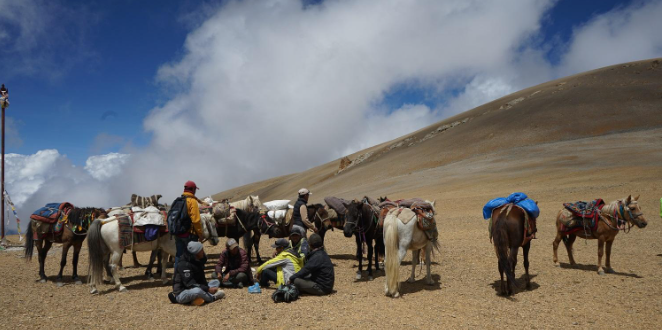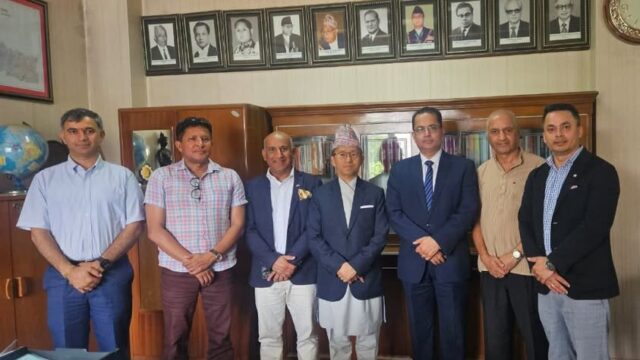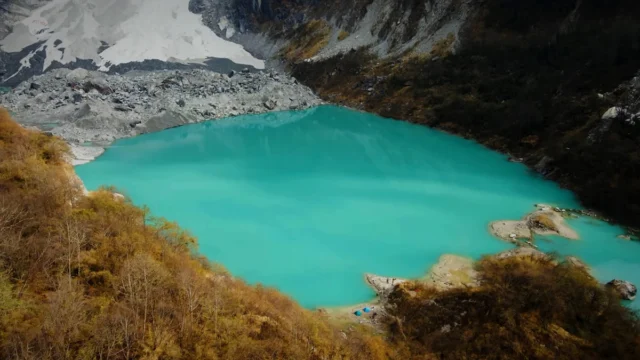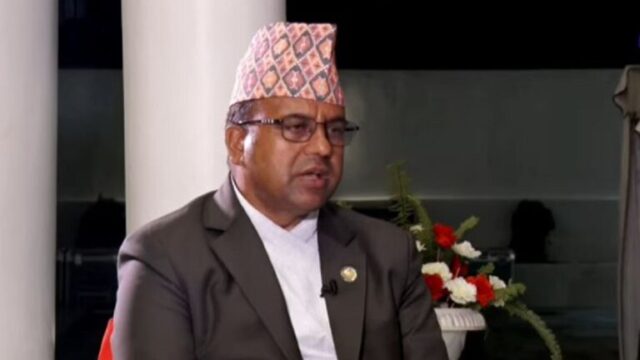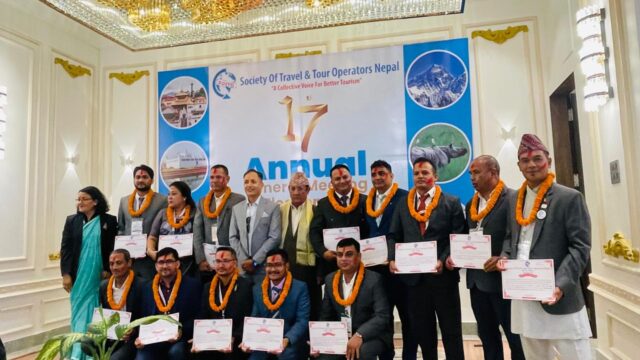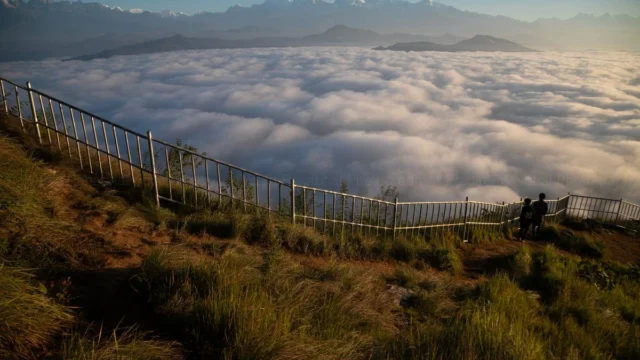Devotees and tourists visiting the sacred pilgrimage site of Damodarkunda in Mustang, revered by both Hindu and Buddhist communities, are facing difficulties due to the absence of proper accommodation and communication facilities.
Damodarkunda, situated at an elevation of 5,000 meters above sea level, lies in Ward No. 4 of Lo-Ghekar Damodarkunda Rural Municipality in Mustang. The pilgrimage site is located in a remote, high-altitude Himalayan region, far from any settlements. The trekking route leading to Damodarkunda has no hotels or lodges, leaving visitors with limited options for rest and food.
Pilgrims have to traverse two mountain ridges to reach Damodarkunda, and many rely on a dormitory-style shelter for accommodation. The Lo-Ghekar Damodarkunda Rural Municipality had established a Dharmashala (pilgrims’ rest house) at Ghimitathi and Damodarkunda two years ago, offering free food and lodging with the help of donations during the monsoon season, from June to August.
Karma Renge Gurung, an employee at the Dharmashala, highlighted the challenges faced in running the facility beyond two months due to financial and manpower shortages. “It is disheartening to see pilgrims and tourists struggle for food and shelter when the Dharmashala is closed,” he said. The Dharmashala operates for just two months each year due to the lack of resources.
The municipality had built dormitories with a capacity for 20 people at both Ghimitathi and Damodarkunda, and temporary tin-roofed shelters are also available. However, the seven-hour trek from Ghimitathi to Damodarkunda offers no resting places, and there is no mobile phone connectivity in the area.
Volunteers, led by Mohan Purja from Myagdi’s Narchyang, have been supplying food essentials like lentils, rice, and flour to the Dharmashala. However, Gurung noted that only three staff members are employed for two months, each earning NPR 500 daily.
A recent visitor, Sarvottam Dhakal from Kathmandu, shared his experience of hardship during his trip to Damodarkunda, mentioning the difficulties of carrying food and sleeping supplies. “It’s exhausting for pilgrims to cook their own meals after such a tiring journey,” Dhakal said.
The village of Ghara is the last human settlement on the trail to Damodarkunda. Travelers reach Ghara via the Jomsom-Korala road on the Kaligandaki Corridor, followed by a one-and-a-half-hour drive to Ghimitathi. From there, devotees often hire horses to travel the rough trail to Damodarkunda, paying around NPR 10,000 per horse for the round trip.
Pema Chhiring Gurung, a horse provider from Ghara, confirmed the lack of accommodation and communication facilities in the area. He added that during the peak pilgrimage season, from May to October, the Dharmashala’s limited operation presents significant challenges, and mobile phone connectivity is non-existent.
Tashi Gurung from Yara, who manages the Dharmashala, mentioned that the food supplies provided by donors are insufficient, and the harsh weather only allows them to operate for two months. “Last year, about 4,000 pilgrims visited Damodarkunda, but this year, the number is down to around 3,000,” he added. The strict regulations for foreign visitors to Upper Mustang, which require a $500 permit for 10 days, have also deterred many international tourists.
Additionally, the high permit fees have prevented economically weaker Indian pilgrims from visiting the site, said Tashi. Ward Chairman Jhyang Chhesa Gurung of Lo-Ghekar Damodarkunda Rural Municipality emphasized the need to extend the operation period of the Dharmashala and expand mobile phone coverage in the area.
“We are working with donors to raise funds to run the Dharmashala regularly, and we have initiated efforts to improve mobile phone services,” he said. The municipality has also requested the federal government to remove the restricted area designation in Upper Mustang to boost tourism.
Damodarkunda, believed to be the source of the Kali Gandaki River, holds great spiritual significance. Pilgrims believe that bathing in the lake brings spiritual purification and fulfillment of desires. The sacred Shaligram stones, found only in the Kali Gandaki, are worshipped by Hindus as representations of Lord Vishnu. Nearby, there is also a Buddhist chorten, and a nearby hill resembles a Lama’s traditional hat.
This site, situated at the base of the Damodar Himalayas, is a stunning blend of natural beauty and spirituality. The best time to visit Damodarkunda is from May to August. During the festivals of Janai Purnima and Chaitra Dashain, the lake is thronged by pilgrims. The lush green Kush grass around the lake is also considered to have great religious significance.
Ramji Subedi, a recent visitor from Beni Municipality, shared his experience, saying that despite the challenges of the journey, the breathtaking beauty of Damodarkunda and the surrounding snow-capped peaks makes all the hardships worthwhile.
